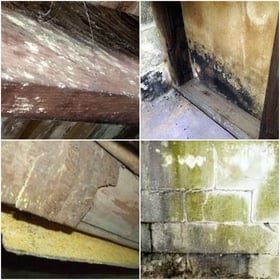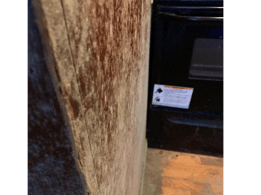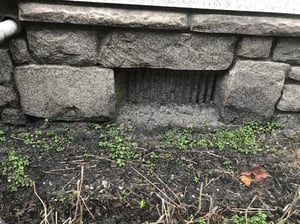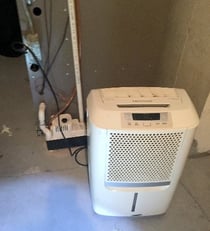Fact: Mold needs water to grow.
“There is always some mold everywhere – in the air and on many surfaces. Molds have been on the Earth for millions of years. Mold grows where there is moisture”
From CDC (Center for Disease Control)
When you see mold, it indicates water issues - water is the fuel that propels mold growth.
Fiction: The leak just went away.
No, the leak didn’t just “go away” it was diverted and is leaking into a different part of your home. The leak could also happen when certain conditions are met, such as rain from a Northeastern direction or when your guests are using the spare bathroom. Take care of any leak be it roof, bathroom or basement right away before it can turn into mold growth.
Promptly fixing leaky roofs, windows, and pipes will save you from mold. Mold growth can begin to occur 48 to 72 hours after water/moisture appears on organic surfaces.
Fact: Mold comes in many different colors, green, yellow, black, white…etc.

Fiction: Black mold is the bad toxic mold.
Black toxic mold is a myth. There is a mold of color that is black but there is no such mold as the “black toxic mold”. There are thousands of mold spores that have different colors and have different health effects. Find out more at Types of Mold.

Fact: Mold growth can occur due to excess humidity.
When your home does not have the proper (habitable) humidity and temperature inside, mold growth can occur, without any water leaks. American Society of Heating, Refrigeration and Air Conditioning Engineers (ASHREA), recommends 30 to 60% RH (Relative Humidity) indoors. (Read more here).
Fiction: Houses do not need gutters.

When you don’t have any gutters, rain water falls directly adjacent to the dwelling foundation. This water can cause damage to foundation and find a pathway into your home. In the image, no gutters were installed and water drained into the crawl space, causing mold growth. The HVAC system was located in the crawl space, where airborne mold spores were brought into the HVAC from the crawl space and distributed throughout the entire house. This caused a musty smell, and after air sampling, showed high levels of mold spores.
Fact: Exposure to damp and mold environments may cause health effects.
Many government organizations (EPA, CDC, Health Canada) agree that water damaged building materials can have adverse health effects to humans exposed to these materials. Who is most likely to be affected by mold depends on the sensitivity of those exposed. People with allergies may have more severe reactions to mold. Those that are immune compromised, have chronic lung illness, infants and young children or the elderly are also more likely to have an allergic reaction to mold growth.
Fiction: Any exposure to mold will cause health effects.
Again – mold is everywhere. It is inside and outside and everyone has different reactions to different types of mold spores. The specific type of reaction a person will have to mold depends on that person.
More Facts:
Fact: Subterranean spaces need dehumidifiers.

Fact: Mold can be carried into your home by attaching itself to clothing, shoes, bags and pets.
True, old books, magazine and cardboard boxes can harbor mold spores. Pets that go outside and stay in the bushes or lay in the grass bring mold into the home.
Fact: Mold can grow inside during cold weather.
In the winter, when buildings are heated, mold often grows in cold, uninsulated exterior windows and walls, including uninsulated closets along exterior walls where building surfaces are generally cold relative to the indoor air temperature. These temperature differentials can allow condensation and are associated mold growth.
Fact: Temperature affects mold growth.
Different types of mold have minimum, optimum and maximum temperature ranges for growth. Many fungi grow well at temperatures between 60- and 80-degrees Fahrenheit, which are also ideal temperatures for human comfort. In addition, as mentioned above, temperature gradients often produce the moisture needed for mold growth. The relative temperature will dictate what type molds are more likely to grow in a that given environment.
Questions? Call Curren Environmental at 856-858-9509 or email us now at info@currenenvironmental.com.

